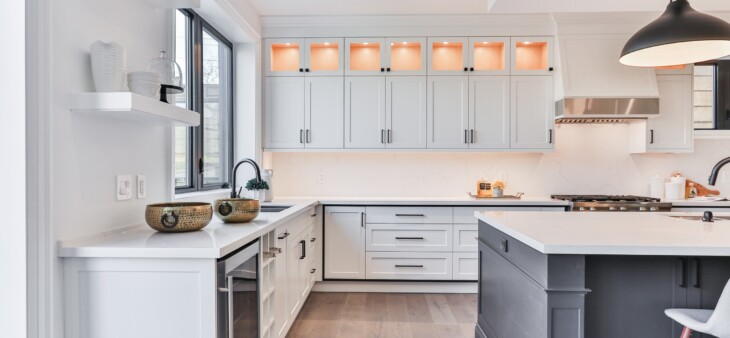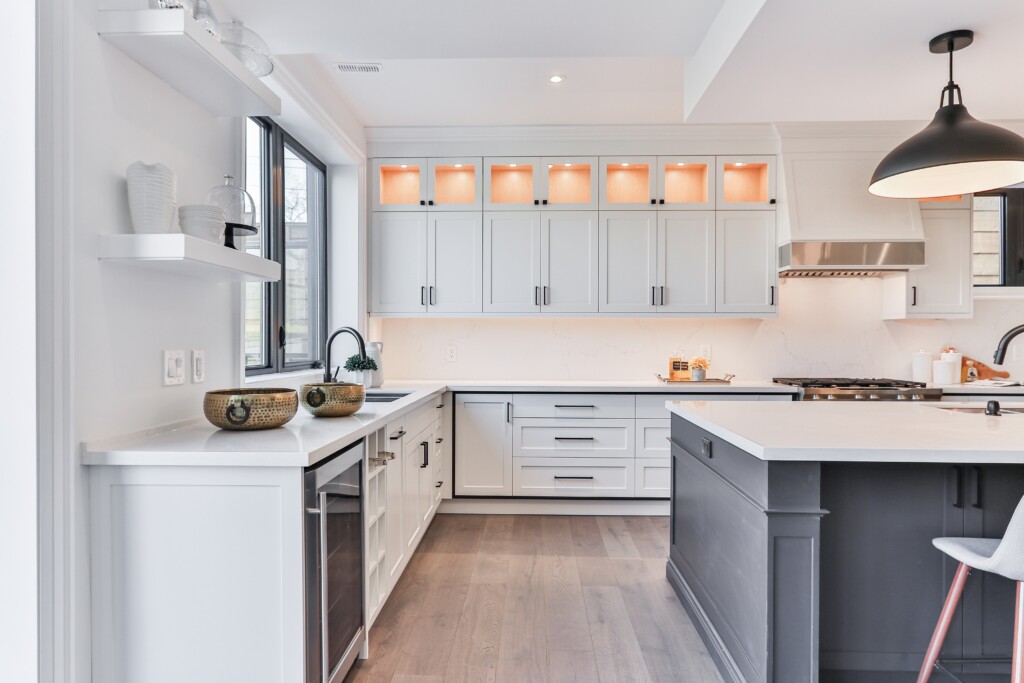Cabinet painting can be a challenging task, contrary to what is portrayed on home improvement shows or DIY videos. It involves making several crucial decisions, ranging from preparing the cabinets to applying paint appropriately. A wrong move during any step of the process can cause disastrous results, and therefore, it is crucial to proceed with caution.
Fortunately, most cabinet painting mistakes can be fixed. To avoid such errors and learn how to correct them if they do occur, consider the following tips.
Step #1: Start The Cabinet Painting Process Over
Cabinet painting can be a challenging task that exposes every mistake and defect if not executed properly. Failure to adequately prepare cabinets or apply paint evenly can result in paint pooling and highlighting uneven scratches or divots. Additionally, using improper painting tools can cause unsightly drips and stroke marks.
In case of such blemishes, it may be best to start the project from the beginning. Although this is a time-consuming option, it allows you to start with a clean slate and avoid making the same mistakes. To prevent similar errors from happening again, follow these best practices:
Sanding Cabinets
To prevent visible flaws in your painted cabinets, it’s important to start with the basics and sand them down before painting. This will help eliminate brush strokes, paint drips, and other blemishes, and also help the new paint adhere better to the cabinet surfaces. You don’t have to sand all the way down to the bare wood; just sand until the surface is smooth and the imperfections are no longer visible.
Repair Damaged Areas
When faced with significant scratches, gouges, or other types of damage, painting over them will not be enough. You’ll need to sand down the affected areas, fill them with a water-based wood filler, and allow it to set. After that, sand the area again to create a smooth surface, then you can proceed with painting.
Clean Cabinets
It’s important to note that any dirt, grease, wax residue, or debris left on the cabinets after sanding can hinder the paint from properly sticking to the surfaces. This can lead to peeling of the paint in the future. To avoid this issue, it’s recommended to clean the cabinets thoroughly using a paint prep degreaser and a soft cloth, instead of relying on soap and water alone.
Prime Cabinets
Skipping the priming process is one of the most common mistakes people make when it comes to painting cabinets. Proper cabinet preparation should never be overlooked, and it is important to use the right product for the job. Avoid using a latex-based primer, as this type of primer is designed for use on walls and is not durable enough for cabinets. Instead, opt for a water or oil-based primer to ensure proper adhesion and long-lasting results.
Apply Cabinet Paint
If you want to avoid visible paint strokes on your cabinets, it’s important to use the right tools for the job. For touch-ups or hard-to-reach areas, it’s fine to use paint brushes. However, when it comes to cabinet doors and drawer fronts, it’s best to use a roller or sprayer. To ensure a smooth finish, it’s a good idea to practice using these tools before applying paint to your cabinets.
Tip #2: Touch Up Mistakes On Painted Cabinets
If your cabinets have only a few spots that need fixing, you can remove the drawer or door fronts with blemishes and refinish them. Sand, clean, prime, and paint the fronts again to achieve a uniform look. For minor blemishes, you can apply a small amount of paint to the affected area and blend it with the surrounding surface. If the issue is inside a drawer or door, use a paintbrush to touch it up.
Tip #3: Know How To Avoid These Common Mistakes
Here are some tips to avoid common mistakes during the cabinet painting process, whether you decide to start over completely or touch up small areas:
- Avoid overloading the roller with paint as it can cause dripping and uneven application.
- Don’t skip any important steps or cut corners to save time. Professional cabinet painters spend a lot of time on cabinet prep to ensure the best results, and you should do the same.
- Allow your cabinets enough time to dry completely. This may take a few days if you’re doing it yourself, so be patient. Reinstalling cabinets before they are fully cured can result in smudges and imperfections.
Tip #4: Have A Professional Paint Your Cabinets For You
If you struggle with cabinet painting and find that it’s not worth the time and effort, it may be wise to hire a professional.
Consider outsourcing the task to a cabinet painting company in your area. Do your research and ask to see their before and after photos to ensure the quality of their work.
N-Hance of Northern Hartford County cabinet painters offer a variety of services to customize your cabinets, and we can often complete projects faster and at a lower cost than DIY. We even provide financing options to make the process more manageable.



